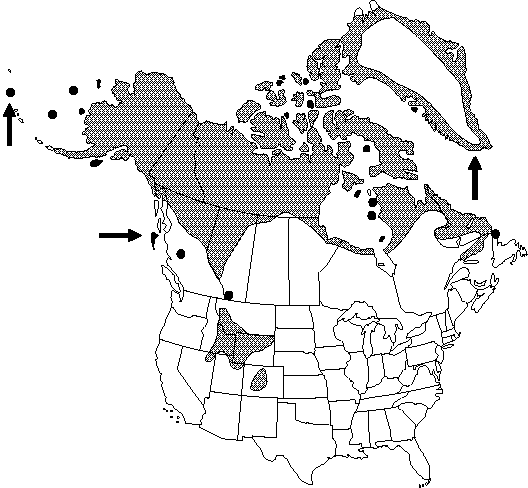Difference between revisions of "Ranunculus hyperboreus"
Skr. Kiøbenhavnske Selsk. Laerd. Elsk. 10: 458. 1770.
FNA>Volume Importer |
FNA>Volume Importer |
||
| Line 70: | Line 70: | ||
|publication year=1770 | |publication year=1770 | ||
|special status=Selected by author to be illustrated | |special status=Selected by author to be illustrated | ||
| − | |source xml=https://jpend@bitbucket.org/aafc-mbb/fna-data-curation.git/src/ | + | |source xml=https://jpend@bitbucket.org/aafc-mbb/fna-data-curation.git/src/f6b125a955440c0872999024f038d74684f65921/coarse_grained_fna_xml/V3/V3_537.xml |
|genus=Ranunculus | |genus=Ranunculus | ||
|subgenus=Ranunculus subg. Ranunculus | |subgenus=Ranunculus subg. Ranunculus | ||
Revision as of 19:54, 24 September 2019
Stems prostrate, glabrous, rooting nodally. Leaves: basal leaves absent, cauline leaf blades reniform to broadly flabellate, deeply 3-lobed or 3-parted, 0.3-1.2 × 0.5-2.1 cm, base obtuse to cordate, lobes undivided or lateral lobes cleft, terminal segment entire or distally crenulate, apex rounded. Flowers: receptacle glabrous; sepals 3-4, spreading or reflexed from base, 2-4 × 1-3 mm, glabrous; petals 3-4, 2-4 × 1-3 mm; nectary on petal surface, scale poorly developed and forming crescent-shaped ridge surrounding but not covering nectary; style 0.1-0.2 mm. Heads of achenes globose or short-ovoid, 3-5 × 2-5 mm; achenes 1-1.4 × 0.8-1.2 mm, glabrous; beak linear, curved, 0.1-0.4 mm. 2n = 32.
Phenology: Flowering late spring–summer (Jun–Aug).
Habitat: Floating in shallow water or stranded on exposed mud at margins of streams and ponds and open wet soil and marshes, in tundra or boreal or subalpine forest
Elevation: 0-3400 m
Distribution

Greenland, Alta., B.C., Man., Nfld., N.W.T., Ont., Que., Sask., Yukon, Alaska, Colo., Idaho, Mont., Nev., Utah, Wyo., Eurasia.
Discussion
Specimens of Ranunculus hyperboreus from the central and southern Rocky Mountains have the leaves always cordate and the fruiting heads always 4-5 mm; they have been separated as R. hyperboreus subsp. intertextus. Although Arctic specimens are more variable, they often have shallowly cordate leaf bases and equally large heads of achenes, so segregation of the subspecies seems inappropriate.
Selected References
None.
